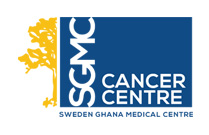Diagnosis
In screening for breast cancer a physician checks one’s breasts for any abnormalities before signs or symptoms of the disease arise. The goal of screening is to find cancer before it spreads. It is recommended that by age 40, women talk to their doctor about when and how they should begin screening for breast cancer. By age 50, it is advised that women get screened for breast cancer bi-annually.
As West-African women have a higher incidence of aggressive, triple negative breast cancer, it is important that once a breast cancer diagnosis is made, treatment is sought as early as possible to improve outcomes.
For routine clinical breast screening, a doctor or qualified health personnel will carefully feel your breasts to examine any physical abnormalities.
Other diagnostic tests for breast cancer include:
Ultrasound: an imaging technique that utilizes soundwaves to produce images of things within the body, such as breast tissue. Ultrasounds of the breasts can be used to differentiate if physical masses are lumps of tissue or fluid-filled cysts.
Mammogram: A mammogram is an x-ray of the chest to detect tumours and other abnormalities in the breast
Biopsy: includes the surgical removal of breast tissue from the area in which breast cancer is suspected. This tissue is then tested for the presence of cancerous cells.
Magnetic Resonance Imaging(MRI): An MRI is another imaging technique. It produces images of the inside of the inside of the body using a magnet and radio waves.
Staging There are four stages used to describe the progression of breast cancer, numbered 0 to IV. Stage 0 indicates that the cancer is noninvasive, while stage IV means that the cancer has metastasized, or spread, to other parts of the body. Your doctor uses these stages to determine your prognosis and inform the decision of the beast treatment types for you.
